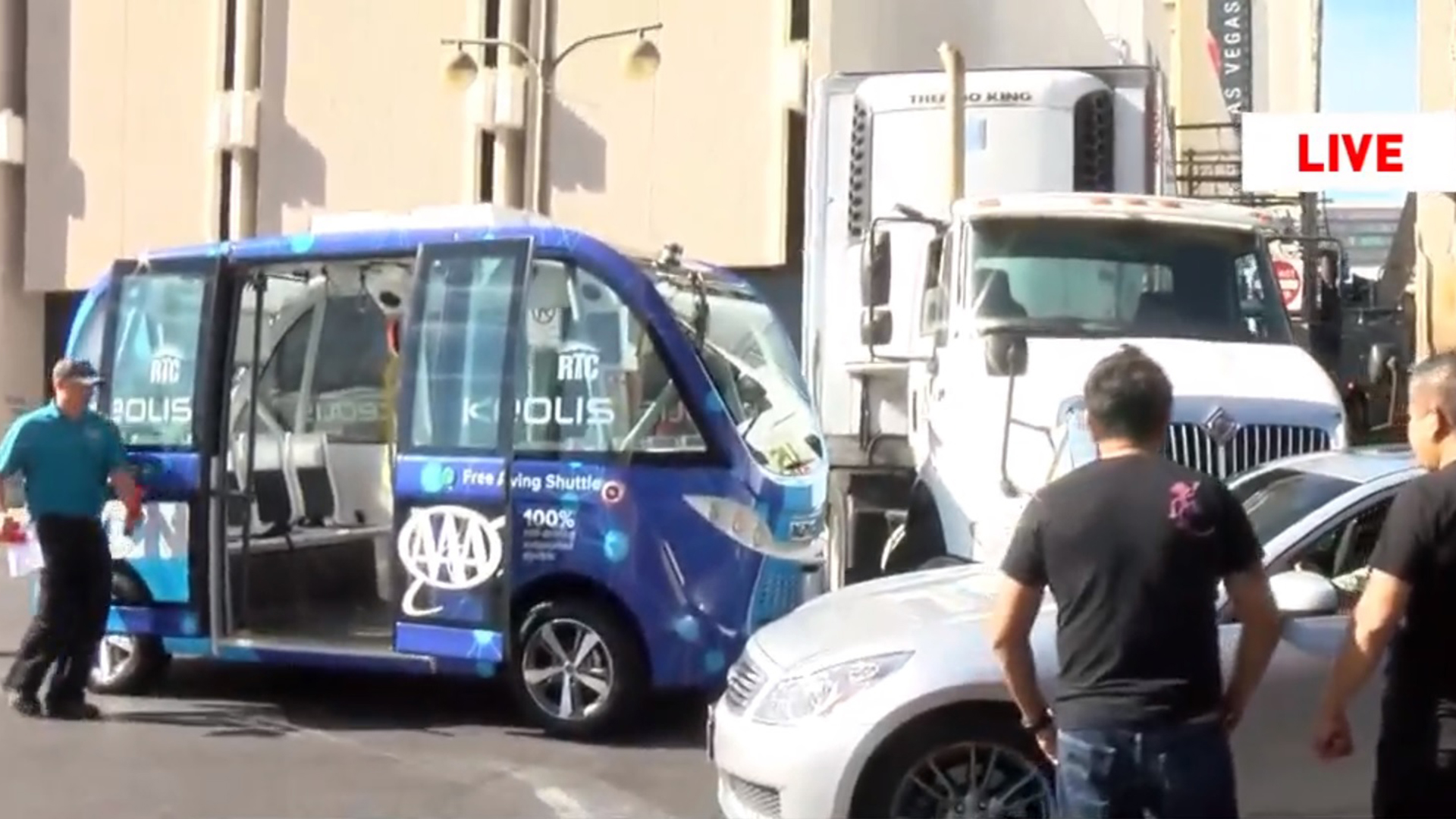

Earlier today, Las Vegas became the first city in America to have a free, electric, self-driving shuttle enter operation. Unfortunately, about an hour later it because the first city in America to have their free, electric, self-driving shuttle involved in an accident, the Las Vegas Review-Journal reports.
The 11-passenger self-driving shuttle, built by a French company called Navya and sponsored by AAA, was unveiled earlier today to much fanfare as a first-in-the-nation free service for the general public to use. It’s programmed to follow a half-mile loop through downtown Las Vegas and pick up passengers and a few designated points. However, it doesn’t seem like it’s programmed to get out of the way of delivery trucks.
Here’s what happened: about an hour after the ribbon-cutting ceremony, the shuttle came upon a semi-trailer attempting to back into a loading bay that was perpendicular to the road and stopped short to let the truck do its thing. But the semi driver either didn’t see the little electric vehicle or expected it to back up, and the arc of his turn caused the tractor’s wheels to clip the front end of the shuttle. No one on board was injured.
According to the Review-Journal, police ticketed the driver for “illegal backing.” City officials were quick to throw the human under the…shuttle as well, with one even going so far as to tell KSNV News that the whole thing could have been avoided “had the truck had the same sensing equipment that the shuttle has.” That’s questionable, but it remains true that one of the biggest hurdles for autonomous cars to overcome is the unpredictability of other human drivers. In March, a self-driving Volvo XC90 developed by Uber rolled over after colliding with another car whose driver failed to yield like he was supposed to.
Speaking of which, the main thing we’re wondering is why the damn thing didn’t back up when it sensed the truck getting too close—and one passenger apparently had the same reaction. After all, that’s a pretty rudimentary part of driving, especially in an urban area where people are often making unsafe moves around you.
“The shuttle just stayed still and we were like, ‘oh my gosh, it’s gonna hit us, it’s gonna hit us!’ and then it hit us. And the shuttle didn’t have the ability to move back, either. Like, the shuttle just stayed still,” she told KSNV.
But hey, that’s what data is for. An executive with Keolis Transit America, one of the companies involved with running the shuttle, told the Review-Journal that it would continue operation after a “diagnostic assessment”
“That’s probably the positive point of all this, is that we have extensive data to be able to tell us what occurred and what we could do in the future to improve upon,” Bell said.
It’s worth noting that the Navya self-driving shuttle is one of the more forward-thinking autonomous concepts we’ve seen in real-world use in this country, though similar ideas have already been tested in Europe. The vehicle has no gas pedal, brake pedal, or steering wheel, though an attendant rides along and monitors everything on a computer that’s presumably equipped with some sort of kill switch. It uses cameras, light sensors, and GPS to tootle around at speeds up to 25 mph. However, it’s only able to follow traffic lights thanks to special transmitters that city officials installed at every intersection along the route.